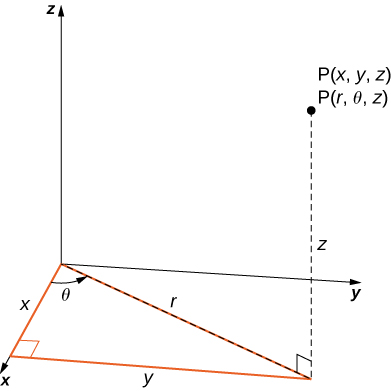| << Chapter < Page | Chapter >> Page > |
Earlier in this chapter we showed how to convert a double integral in rectangular coordinates into a double integral in polar coordinates in order to deal more conveniently with problems involving circular symmetry. A similar situation occurs with triple integrals, but here we need to distinguish between cylindrical symmetry and spherical symmetry. In this section we convert triple integrals in rectangular coordinates into a triple integral in either cylindrical or spherical coordinates.
Also recall the chapter opener, which showed the opera house l’Hemisphèric in Valencia, Spain. It has four sections with one of the sections being a theater in a five-story-high sphere (ball) under an oval roof as long as a football field. Inside is an IMAX screen that changes the sphere into a planetarium with a sky full of twinkling stars. Using triple integrals in spherical coordinates, we can find the volumes of different geometric shapes like these.
As we have seen earlier, in two-dimensional space a point with rectangular coordinates can be identified with in polar coordinates and vice versa, where and are the relationships between the variables.
In three-dimensional space a point with rectangular coordinates can be identified with cylindrical coordinates and vice versa. We can use these same conversion relationships, adding as the vertical distance to the point from the -plane as shown in the following figure.

To convert from rectangular to cylindrical coordinates, we use the conversion and To convert from cylindrical to rectangular coordinates, we use and The -coordinate remains the same in both cases.
In the two-dimensional plane with a rectangular coordinate system, when we say (constant) we mean an unbounded vertical line parallel to the -axis and when (constant) we mean an unbounded horizontal line parallel to the -axis. With the polar coordinate system, when we say (constant), we mean a circle of radius units and when (constant) we mean an infinite ray making an angle with the positive -axis.
Similarly, in three-dimensional space with rectangular coordinates the equations and where and are constants, represent unbounded planes parallel to the -plane, -plane and -plane, respectively. With cylindrical coordinates by and where and are constants, we mean an unbounded vertical cylinder with the -axis as its radial axis; a plane making a constant angle with the -plane; and an unbounded horizontal plane parallel to the -plane, respectively. This means that the circular cylinder in rectangular coordinates can be represented simply as in cylindrical coordinates. (Refer to Cylindrical and Spherical Coordinates for more review.)

Notification Switch
Would you like to follow the 'Calculus volume 3' conversation and receive update notifications?